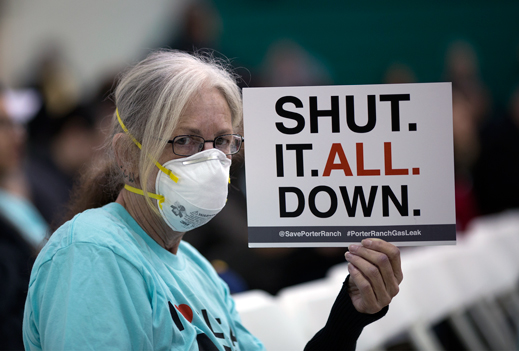California Gas Leak Exposes Growing Natural-Gas Risks
Since it was first detected on October 23, 2015, the natural-gas leak at Aliso Canyon, a Southern California Gas Co. storage facility in the bucolic Porter Ranch community, has spewed more than 86,000 metric tons of methane into the atmosphere. On Monday So Cal Gas said it has abandoned a plan to capture and burn off the gas, which is a far more potent greenhouse gas than carbon dioxide. That means a solution to the disaster is still weeks, if not months, off. (This long feature on Newsweek.com explores in detail the background of the leak.)

The Porter Ranch accident highlights a growing problem in the U.S.: as natural gas replaces coal as a key energy source, the dangers of leaks and explosions from aging pipelines and storage facilities is rising. Last year Pacific Gas & Electric was hit with a record $1.6 billion fine for a gas explosion in San Bruno, California, that killed nine people in 2010. Decaying pipelines under the streets of New York City represent a “ticking time bomb,” according to a report from TV station CBS2. Local gas distribution companies are expected to spend billions to upgrade aging infrastructure in the coming years, according to Fitch Ratings. And the U.S. Environmental Protection Agency is finalizing new regulations to limit methane emissions at each stage of the oil and gas production and transportation system—but those rules will cover only new installations, not existing facilities.
(source: LA Times, San Jose Mercury News, EDF)
Keep Reading
Most Popular
Large language models can do jaw-dropping things. But nobody knows exactly why.
And that's a problem. Figuring it out is one of the biggest scientific puzzles of our time and a crucial step towards controlling more powerful future models.
The problem with plug-in hybrids? Their drivers.
Plug-in hybrids are often sold as a transition to EVs, but new data from Europe shows we’re still underestimating the emissions they produce.
How scientists traced a mysterious covid case back to six toilets
When wastewater surveillance turns into a hunt for a single infected individual, the ethics get tricky.
Google DeepMind’s new generative model makes Super Mario–like games from scratch
Genie learns how to control games by watching hours and hours of video. It could help train next-gen robots too.
Stay connected
Get the latest updates from
MIT Technology Review
Discover special offers, top stories, upcoming events, and more.